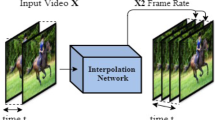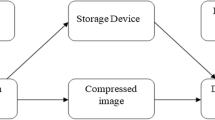Abstract
Over the top (OTT) video streaming is widely deployed to deliver stored media. But, the OTT video quality assessment method is uncertain. In this paper, we introduce three application metrics of OTT video quality, including initial buffering time, mean re-buffering duration, and re-buffering frequency. We find the transmission control protocol (TCP) throughput can influence the application metrics; then, we improve the TCP model and forecast the TCP throughput more accuracy. Next, we give experiments to change the network environment and test the OTT video. Our ultimate goal is to characterize the correlation between the application metrics and user quality of experience using simplified fuzzy inference system. Firstly, the nonlinear support vector machine is used to divide the application metrics into different categories. Secondly, the different categories of fuzzy rules are designed to infer the objective scores. The proposed objective model can reduce the calculation steps effectively and improve the similarity. Lastly, the existing assessment methods are compared with it, the experimental results show that the method accords closely with human subjective judgment.












Similar content being viewed by others
References
Zhu, Z., Liu, H., Lu, J., et al.: A metric for video blending quality assessment. IEEE Trans. Image Process. 29, 3014–3022 (2019)
Shi, W., Sun, Y., Pan, J.: Continuous prediction for quality of experience in wireless video streaming. IEEE Access 7, 70343–70354 (2019)
Shi, Z., Huang, C.: Network video quality assessment method using fuzzy decision tree. IET Commun. 13(14), 2192–2198 (2019)
Chikkerur, S., Sundaram, V., Reisslein, M., et al.: Objective video quality assessment methods: a classification, review and performance comparison. IEEE Trans. Broadcast. 57(2), 165–182 (2011)
Yang, F.-Z., Shuai, W.A.N.: Overview of state of the art and future of networked video quality assessment. J. Commun. 33(4), 107–114 (2012)
Tao, X., Duan, Y., Xu, M., Meng, Z., Lu, J.: Learning QoE of mobile video transmission with deep neural network: a data-driven approach. IEEE J. Sel. Areas Commun. 37(6), 1337–1348 (2019)
Appina, B., Dendi, S.V.R., Manasa, K., et al.: Study of subjective quality and objective blind quality prediction of stereoscopic videos. IEEE Trans. Image Process. 28(10), 5027–5040 (2019)
Manasa, K., Channappayya, S.S., Channappayya, S.S.: An optical flow-based full reference video quality assessment algorithm. IEEE Trans. Image Process. 25(6), 2480–2492 (2016)
Murat Demirtas, A., Reibman, A.R., Jafarkhani, H.: full-reference video quality estimation for videos with different spatial resolutions. IEEE Trans. Circuits Syst. Video Technol. 26(11), 1988–2000 (2016)
Golestaneh, S.A., Karam, L.J.: Reduced-reference quality assessment based on the entropy of DWT coefficients of locally weighted gradient magnitudes. IEEE Trans. Image Process. 25(11), 5293–5303 (2016)
Liu, M., Gu, K., Zhai, G., et al.: perceptual reduced-reference visual quality assessment for contrast alteration. IEEE Trans. Broadcast. 63(1), 71–81 (2017)
Li, Y., Po, L.-M., Cheung, C.-H., et al.: No-reference video quality assessment with 3D shearlet transform and convolutional neural networks. IEEE Trans. Circuits Syst. Video Technol. 26(6), 1044–1057 (2015)
Yao, J.Y., Liu, G.: Bitrate-based no-reference video quality assessment combining the visual perception of video contents. IEEE Trans. Broadcast. 65(3), 546–557 (2019)
Mok, R.K.P., Chan, E.W.W., Chang, R.K.C.: Measuring the quality of experience of HTTP video streaming. In: Presented at 2011 12th IFIP/IEEE International Symposium on Integrated Network Management and Workshops, Dublin, Ireland (2011)
Liu, J., Han, Z., Li, W.: Performance analysis of TCP new reno over satellite DVB-RCS2 random access links. IEEE Trans. Wirel. Commun. 19(1), 435–446 (2019)
Romero-Angeles, R.I., Garcia-Ruiz, R., Lara-Rodriguez, D.: An algorithm for the evaluation of the throughput of a Tcp newreno bulk data flow. IEEE Commun. Lett. 19(6), 941–944 (2015)
Zhao, Y.: Analysis of influencing factors for TCP throughput. In: Presented at 2015 IEEE 5th International Conference on Electronics Information and Emergency Communication, Beijing, China (2015)
Altman, E., Avrachenkov, K., et al.: A stochastic model of TCP/IP with stationary random losses. IEEE/ACM Trans. Network. 13(2), 356–369 (2005)
Wei, S., Tao, W., et al.: Steady state throughput modeling of TCP new reno. J. Comput. Res. Dev. 47(3), 398–406 (2010)
Wu, J., Yang, H.: Linear regression-based efficient SVM learning for large-scale classification. IEEE Trans. Neural Netw. Learn. Syst. 26(10), 2357–2369 (2015)
Koda, S., Zeggada, A., Melgani, F., et al.: Spatial and structured SVM for multilabel image classification. IEEE Trans. Geosci. Remote Sens. 56(10), 5948–5960 (2018)
Acknowledgements
This work is supported by High Level Talent Research Project in Huaqiao University (605-50Y14041), Quanzhou City Science & Technology Program of China (2021C003R), Young and Middle-aged Teacher Education and Science Research Foundation of Fujian Province of China (No. JAT160032).
Author information
Authors and Affiliations
Corresponding author
Additional information
Publisher's Note
Springer Nature remains neutral with regard to jurisdictional claims in published maps and institutional affiliations.
Rights and permissions
About this article
Cite this article
Shi, Z., Huang, C. The research of OTT video quality assessment method. SIViP 16, 569–577 (2022). https://doi.org/10.1007/s11760-021-02001-5
Received:
Revised:
Accepted:
Published:
Issue Date:
DOI: https://doi.org/10.1007/s11760-021-02001-5




